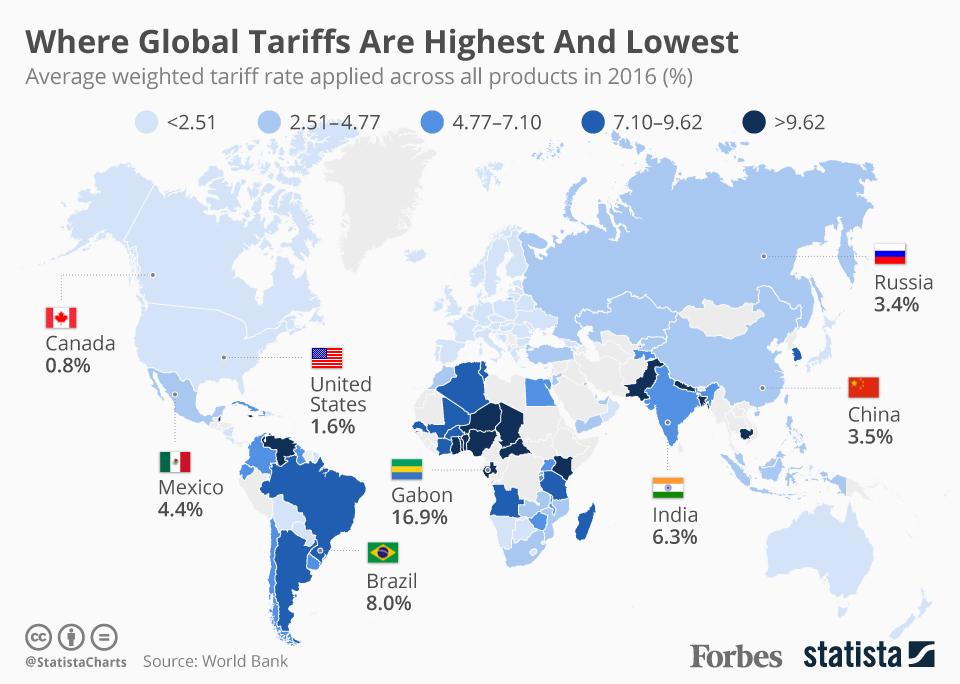US Imposes New Tariffs On Southeast Asian Solar Imports: What You Need To Know

Table of Contents
Reasons Behind the Imposition of Tariffs on Southeast Asian Solar Imports
The US government's justification for these new tariffs centers on allegations of circumvention of previous tariffs imposed on Chinese solar products. The argument is that Southeast Asian manufacturers are effectively acting as proxies for Chinese companies, bypassing existing trade restrictions. This circumvention, according to the US government, undermines the intended impact of earlier trade actions and unfairly harms domestic US solar panel manufacturers.
The process leading to this decision involved a thorough trade investigation. This investigation examined detailed trade data, production processes, and supply chains, aiming to identify whether Southeast Asian solar imports were circumventing previous anti-dumping and countervailing duties imposed on Chinese solar products. The findings of this investigation, which included detailed analysis of component sourcing and manufacturing processes, formed the basis for the new tariff imposition.
Furthermore, lobbying efforts by domestic US solar panel manufacturers played a significant role in pushing for these tariffs. These manufacturers argue that the influx of cheaper imports from Southeast Asia is hindering their ability to compete and grow. They contend that the tariffs are necessary to protect American jobs and foster domestic solar manufacturing.
- Specific Allegations of Circumvention: The investigation focused on allegations that Chinese companies are shifting production to Southeast Asian countries, using these nations as a base to export solar panels to the US, thereby avoiding existing tariffs.
- Timeline of the Investigation: The investigation likely spanned several months, involving data collection, analysis, and consultations with stakeholders, before the final decision was announced.
- Key Players Involved in Lobbying Efforts: Several prominent US solar manufacturers and industry associations actively participated in lobbying efforts to persuade the government to implement these tariffs.
Southeast Asian Countries Affected by the New Tariffs
The new US tariffs significantly impact several Southeast Asian nations heavily involved in solar panel manufacturing and export. This includes Cambodia, Malaysia, Thailand, and Vietnam. These countries have witnessed substantial growth in their solar industries in recent years, with significant exports directed toward the US market.
The economic consequences for these countries are likely to be substantial. Reduced access to the US market will severely impact their export revenues and potentially hinder the growth of their solar sectors. This could lead to job losses and reduced investment in the renewable energy sector within these nations.
- Export Data for Solar Products: Detailed export figures for each affected country prior to the tariff implementation will provide crucial context for understanding the scale of the impact.
- Reliance on the US Solar Market: The extent to which each Southeast Asian country relies on the US market for its solar exports will determine the severity of the economic consequences.
- Government Responses from Affected Countries: Governments in these countries might explore retaliatory measures or seek diplomatic solutions to address the negative impacts of the tariffs.
Impact of Tariffs on US Businesses and Consumers
The most immediate consequence of the tariffs is a projected increase in solar panel prices for US consumers. This price hike could discourage potential buyers and slow down the adoption of solar energy in the US. The higher costs also negatively impact the financial viability of many planned US solar energy projects and installations. This can lead to project delays, cancellations, and a potential slowdown in the growth of the US renewable energy sector, undermining progress towards climate goals.
- Estimated Price Increases for Solar Panels: Industry analysts' predictions for price increases, broken down by solar panel type, will quantify the impact on consumers.
- Potential Project Delays or Cancellations: Case studies of projects facing delays or cancellations due to the higher cost of solar panels will provide concrete examples of the impact.
- Long-Term Impact on Renewable Energy Adoption: The long-term effect of increased solar energy costs on the overall rate of renewable energy adoption within the US needs to be analyzed.
Potential Long-Term Consequences and Alternatives
The tariffs could strain US-Southeast Asian trade relations, potentially leading to trade disputes and retaliatory actions from the affected countries. The disruption of global solar supply chains, already stressed by geopolitical factors, is another significant concern. This disruption could lead to global shortages, further increasing solar panel prices worldwide.
To mitigate the negative consequences, several alternatives exist. The US government could renegotiate the terms of the tariffs or explore alternative sources for solar panel imports. International organizations could play a mediating role, facilitating discussions between the US and Southeast Asian governments. Furthermore, fostering greater investment in domestic US solar manufacturing capacity is essential to reducing reliance on imports.
- Potential for Trade Disputes: The likelihood of trade disputes escalating due to these tariffs needs detailed analysis.
- Alternative Sources for Solar Panel Imports: Examining viable alternatives to Southeast Asian imports, including domestic production and imports from other regions, offers mitigation strategies.
- The Role of International Organizations: The potential role of international organizations like the WTO in resolving the trade disputes needs further investigation.
Conclusion: Understanding the Implications of US Tariffs on Southeast Asian Solar Imports
The imposition of US tariffs on Southeast Asian solar imports is a complex issue with far-reaching consequences. The stated reasons behind the tariffs are allegations of circumvention of previous tariffs on Chinese solar products, but the impact will be felt across Southeast Asia, affecting the economies of multiple countries, and significantly impacting the US solar market and consumers through increased costs. These increased costs threaten to hinder the growth of the US renewable energy sector and hamper progress towards ambitious clean energy goals. Staying informed about updates on this situation is crucial. Contact your representatives to voice your concerns regarding these US solar tariffs and their effects on clean energy initiatives. Further research on Southeast Asian solar imports and their future in a world of shifting trade dynamics is essential for navigating this evolving landscape.

Featured Posts
-
 Epcots Flower And Garden Festival What To Expect
May 30, 2025
Epcots Flower And Garden Festival What To Expect
May 30, 2025 -
 Kdyz Se Dilo Podari Nejlepsi Ceske Stavby Oceneny V Soutezi Stavba Roku
May 30, 2025
Kdyz Se Dilo Podari Nejlepsi Ceske Stavby Oceneny V Soutezi Stavba Roku
May 30, 2025 -
 Deutsche Bank London E18 Million Fixed Income Bonus Mystery
May 30, 2025
Deutsche Bank London E18 Million Fixed Income Bonus Mystery
May 30, 2025 -
 Beach Day In San Diego County This Weekend Planning And Activities
May 30, 2025
Beach Day In San Diego County This Weekend Planning And Activities
May 30, 2025 -
 Sangre Del Toro A Guillermo Del Toro Documentary Debuts At Cannes Film Festival
May 30, 2025
Sangre Del Toro A Guillermo Del Toro Documentary Debuts At Cannes Film Festival
May 30, 2025
